After another windy overnight bus (full of yet more of the judder bars that Mexico seems to be so fond of!) we arrived wearily in San Cristobal de Las Casas. I dont know why we keep catching them. In theory, the overnight bus is a fantastic way to save money and a great way to not waste daylight hours which could be better used exploring, but we always seem to arrive tired and then spend the next day walking around in a semi zombied state! Mexican buses are renowned for their loud music, terrrrible 80s/early 90s movies (think van damme and stallone!) and overdone airconditioning but we lucked out with a recent Reese Witherspoon rom com (good chance to practice our spanish translation skills) and a bus driver who was obviously feeling the chill of the night.
Arriving in San Cristobal we caught a local taxi to our hostel because I had a big blister on my foot and just couldnt be arsed walking. The lovely hostel owner greeted us at the door, and no sooner were we settled inside his wife was cooking us breakfast and he was telling us all about the places to go and things to see. Erika's eggs were just the sustenance we needed to get out exploring this high mountain colonial town. Everyone we had met before coming here had warned us that 'oh its so cold in San Cristobal!' and it was pretty chilly in the cool mountain air so we added a couple of extra layers before heading out. By lunchtime though it had warmed right up and we were stripping them off again. Even managed to get a bit of sunburn at some point during the day.

Bright coloured carpets
|
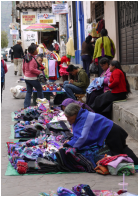
The ladies setting up the wares outside the market
|
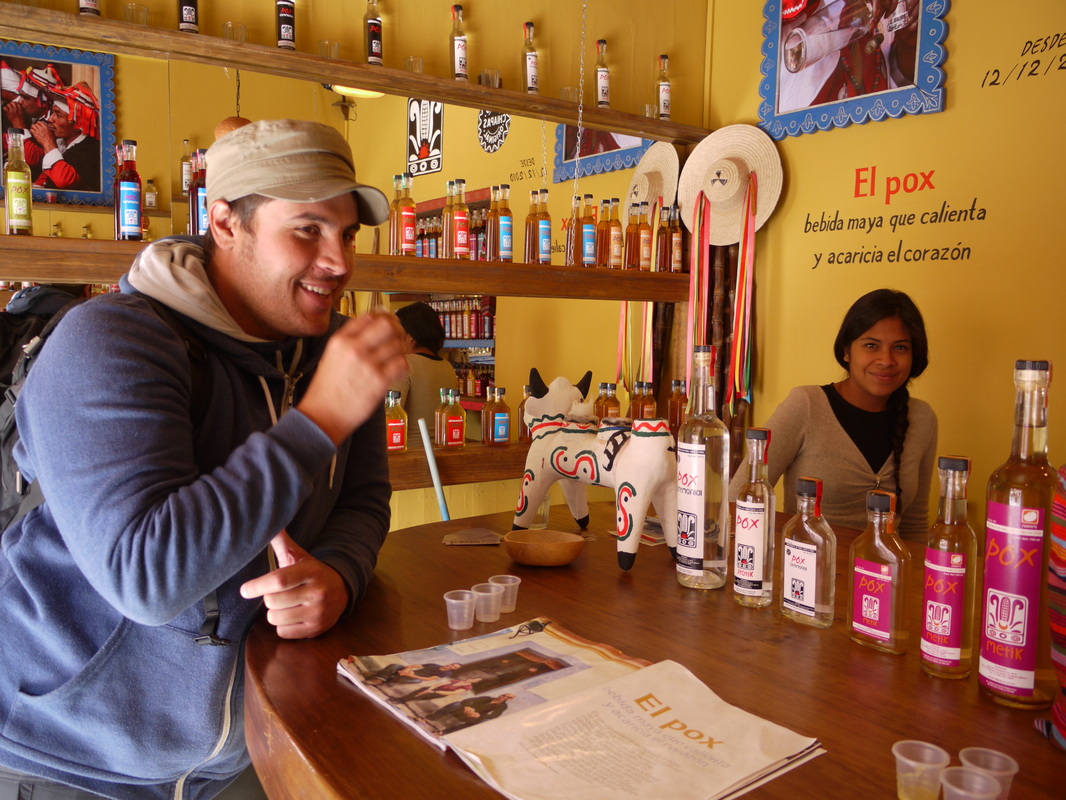
Time for a taster!
| We found the locals setting up the markets full of leather goods, bright colourful woven blankets, tapestries and other bits and bobs and despite being tempted by a few things we didn't end up buying anything. Its funny how accustomed we have become to living on the peso, some of the things we decided against purchasing we were probably arguing over £1 or £2! Wandering along one of the main streets of town we stumbled upon a 'Posheria' - interested, we wandered inside and saw bottles of spirits on the walls just waiting to be sampled. We presumed it was going to be another incarnation of the infamous mezcal but it turns out it wasnt. Pox (or 'Posh' as its pronounced) has been used by the Mayans for religious and ceremonial purposes for a long time. Despite this, until 2 years ago it was actually illegal to produce it, and the Posheria in San Cristobal is one of the first places in Mexico to get an official government licence to sell the stuff. Its made from sugarcane and comes straight in various aged varieties or infused with local fruits. The first one that the friendly owners handed us to try looked suspiciously like the white lightening mezcal so I was pretty hesitant to try it but it was actually suprisingly smooth and didnt have any of the burning sensation I was anticipating. Saying that though the aged varieties were definitly much nicer. Seeing as we were the only customers and the owners were in a good mood we spent quite a bit of time chatting with them and planning their grand empire expansion, in between sampling ALL of the flavours (be rude not to really!). We came away with just one bottle (damn our small packs!) of the blackberry infused one. Whether or not it'll make it back to NZ is still to be decided haha.
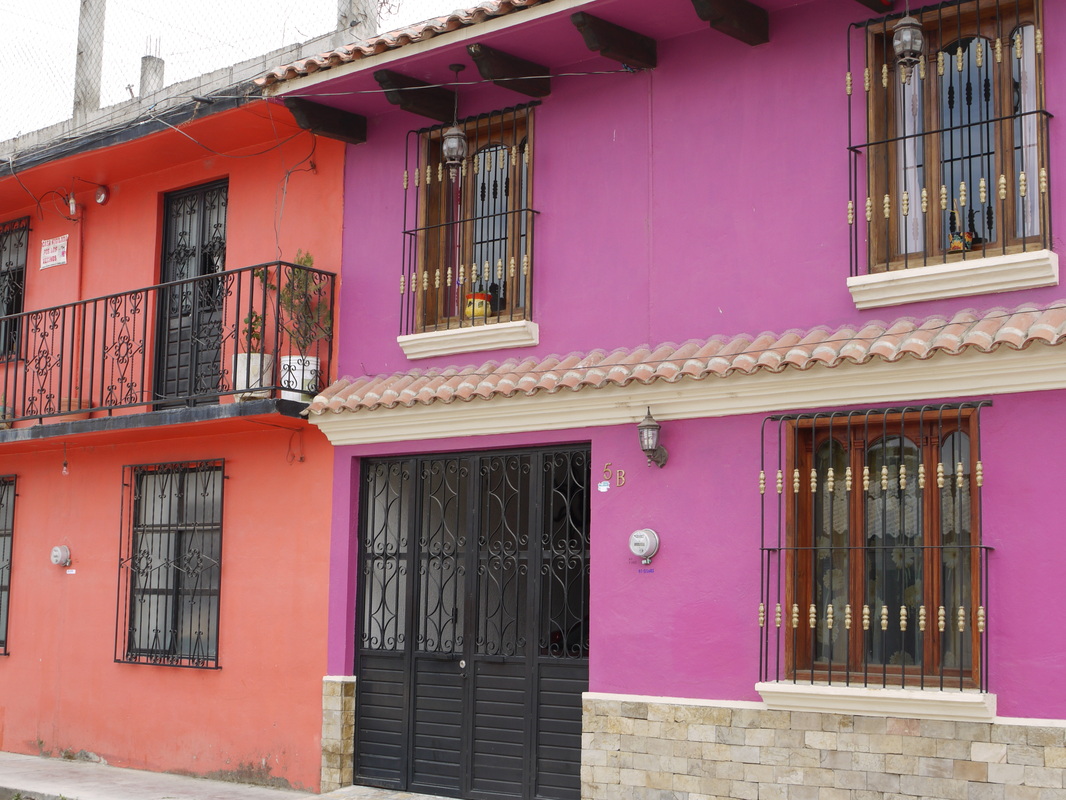
Bright colourful houses
|

Frans Blom
|
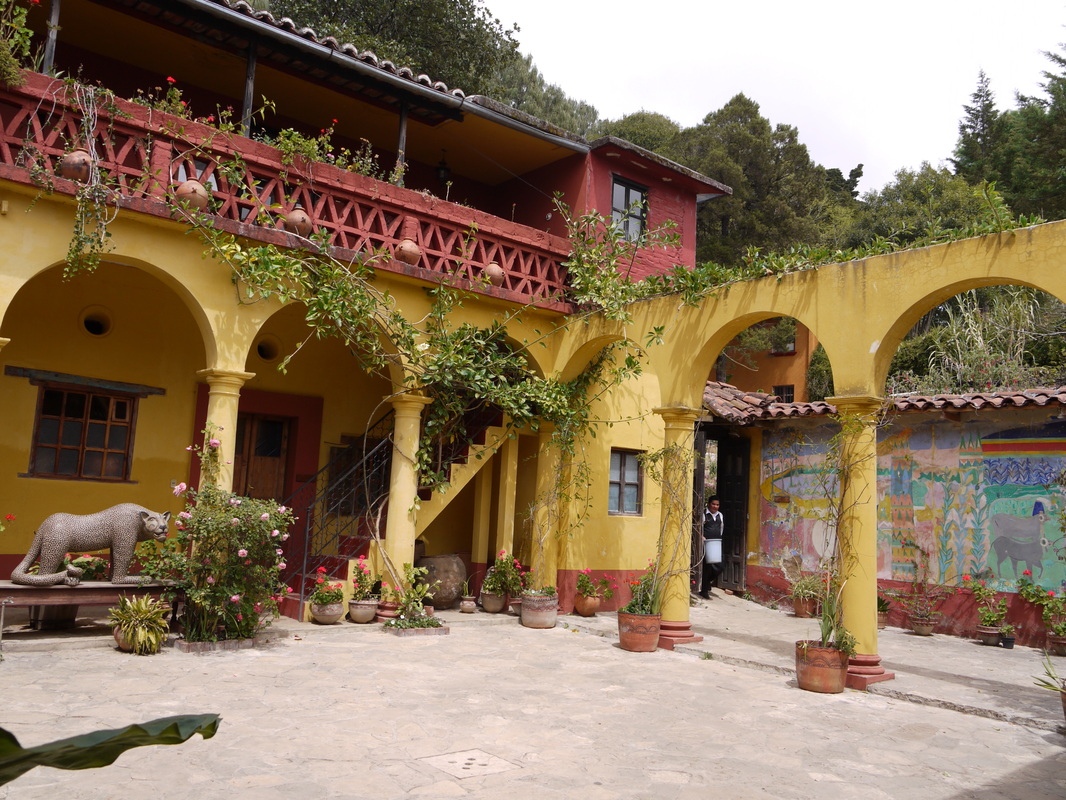
the pretty courtyard inside Na Bolom
| Wandering up the hill to one of the (many) churches we had a nice view back of the city and the chance to chill out for a bit before heading back to the hostel via another local artisan market and a museum for a siesta. The museum we visited was called Casa Na Bolom (the house of the jaguar) and it is a cultural association which was the former house of archaeologist Frans Blom and his wife, Trudi, a documentary photographer, journalist, environmental pioneer, and jungle adventurer. The Danish/German couple became fascinated with Mexican culture and devoted their lives to cultural studies and preserving the way of life of the Lacandon Maya peoples, the only Maya never conquered or converted by the Spanish. The former monastery their house is located in has been turned into an museum, and educational/study centre for the people of Chiapas and beyond. In the 1970s Trudi became very concerned about the destruction of the jungle she loved so in 1975 she expanded Casa Na Bolom's beautiful walled gardens to include a tree nursery, which 38 years on still supplies free trees for reforestation in Chiapas.
One of the funniest moments of the day had to be walking past a random corner store and hearing the London £1 fish song blaring from the radio! That night we headed back into the centro area to people watch and sample some of the slow cooked cochinita pibil (pulled pork) that the Northern Chiapas and Yucatan Regions are famous for. It was delicious! No photo for the best bites though because we were so hungry we forgot! If we can manage to resist eating it for more than 15 seconds next time ill get one I promise, although its just so damn delectable its hard to restrain yourself!Next stop: Palenque
At the end of our second week of Spanish we decided we would spend the weekend touring the local towns and seeing the sights that we had intended to do last week, but couldn't because I was sick. We booked ourselves onto a tour with a local company who supposedly ran tours in both english and spanish except unfortunately for us, we were the only people who spoke english and the guide used that as his opportunity to speak as little English as possible. While we have been learning Spanish for two weeks now, we certainly aren't at the level of comprehension for a full days tour. The first stop on our tour was in a nearby town to visit a tree. Not just any old tree though, this one is 2000 years old and is apparently the widest tree in the world. Its 58m wide, which is apparently roughly 28 people standing arm to arm around it. Pretty impressive for a tree! Next stop was a local textiles factory where they showed us how they weave rugs and other items. Again we were a bit frustrated as the guy at the factory asked whether anyone spoke English but when ourselves and another couple put up our hands we understood him enough that he said 'Oh well you can just practice your Spanish'. thanks buddy! Fortunately we visited a textile factory in Turkey a couple of years ago so we got the jist of what was going on. After that we headed to a local mezcaleria for a rundown on how the local tequila like spirit is made and enjoyed lots of free samples which made us pretty light headed since it was before lunch! One of the main highlights of the day was a visit to Mitla, the second most important archaeological site in the state of Oaxaca and the most important in the Zapotec Culture. The name Mitla is derived from the Nahuatl name Mictlan which means the 'place of the dead' or the 'underworld' because they used to bury lots of their important members of the community there. A bit like the fancy pants retirement village of the day I think haha. The original Zapotec name has the more mellow meaning of 'place of rest'. The Spanish couldnt say Mictlan so they hispanisized it to Mitla. What makes Mitla unique is the elaborate and intricate mosaic designs that cover the site. They are made with small cut and polished stones and have been put in place without the use of mortar. Researchers believe that the site was constructed as a commercial center in 850 and was still being expanded when the Spaniards arrived and destroyed it. Good one Spaniards!
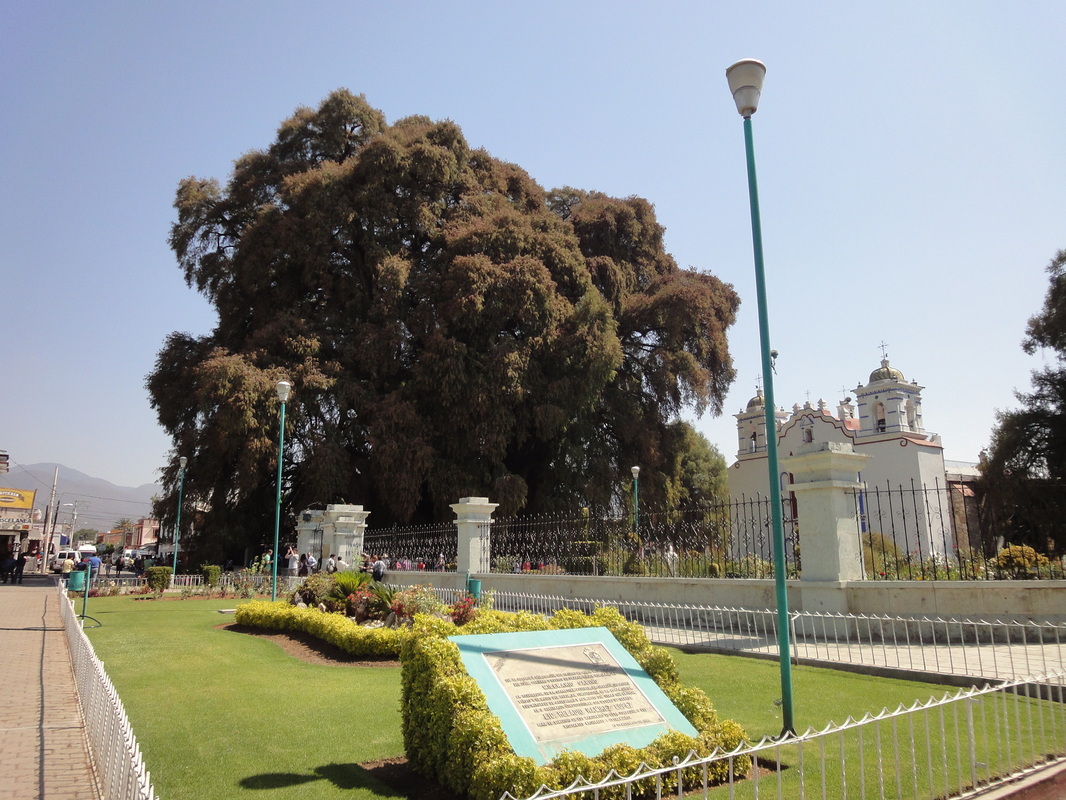
A really big, really old, tree
|
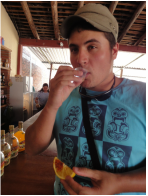
Time for a taster!
|
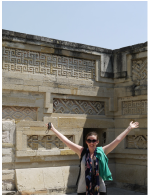
Inside the palace at Mitla
| There are tombs under some of the buildings which are decorated with mosaics and which have stairs that descend from the main plaza area. One of the tombs has an entrance that is divided by a thick column. This column is popularly known as the "Columna de la Vida" (Column of Life). According to legend, you are supposed to wrap your arms around the column, and the space remaining between the hands indicate the amount of life the you have left but unfortunately there was no fortune telling for us as they have fenced the column off.
The last stop on our tour was at Hierve el Agua, which is a set of rock formations that look like waterfalls. They have been created by fresh water springs, whose water is over-saturated with calcium carbonate and other minerals. As the water scurries over the cliffs, the excess minerals are deposited, basically the same way that stalactites are formed in caves. With their high mineral content the waters are reputed to have healing qualities and many locals and tourists alike come for a dip in the pools which have been formed at the top. The water is supposed to be thermal but its more refreshing than warm!
On Sunday we caught a local bus to the nearby town of Tlacolula. While we were waiting for the bus we managed to practice our Spanish with a friendly (and patient!) local for 15 or 20 minutes which was great. Tlacolula is a main commercial center in the area but its best known for its weekly open air market. The market is one of the oldest, largest and busiest in Oaxaca, mostly selling foodstuffs and other necessities for the many rural people which come into town on Sundays to shop and we had a good time wandering around people watching. We had hoped to buy some trinkets to bring home from the local artisans but nothing really grabbed us.

The pools at the top of hierve el agua
| | We signed up for 3 more days of Spanish this week, and while Patty has returned to the States we have Manuel as our teacher again which is good, except there's no way hes letting us get away with forgetting anything this week since he was the one who taught us last week! After class on Monday we headed to visit Monte Alban. If Mitla was the main religious centre for the Zapotecs, this was the main political centre. Monte Alban sits on top of a local mountain about 9km out of the city and offers some stunning panoramas of the surrounding valley. Fortunately for us the sky was cloudy during our visit as the site is pretty open and exposed and I can imagine it would be scorching in Summer. Given its location, the number and size of the structures is pretty amazing and we spent a good couple of hours exploring the site before we headed back into town to the local food market to feed our grumbling tummys.
On our final Tuesday night we decided we would venture to a local open air concert called Martes de Bruhas (Witches Tuesday). The concert runs every Tuesday during Lent and some of the most popular Mexican female artists perform for free each week. The guy at the hostel told us how we could catch a local 'collectivo' (kinda like a taxi but you pay per seat and squeeze in as many people as you can!) but on our way there we spotted a bus which seemed to be going in the same direction. After checking with the conductor that it went towards Martes de Bruhas we jumped on. Only problem was we thought the driver was going to tell us where to get off, but he didn't so by the time he realised we were still on the bus we were ages away from where we were supposed to be on a rather dark and lonely street! Fortunately a lovely local lady at the corner store hailed us a motor-taxi (basically a tuk-tuk) who delivered us safely to the gig. Lots of locals were hanging out in the square, relaxing under the stars and listening to Ana Diaz who had a pretty cool voice. There were also lots of tamales for sale for those who were hungry and we sampled a couple of different ones. Tamales are kind of like mashed potatoe, except its maize, with different fillings. My favourite was a the 'raja' which is chicken with tomatoes, onions and garlic. Muy Bonita!
Next stop: San Cristobal de las Casas
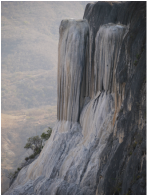
The calcified waterfalls
|
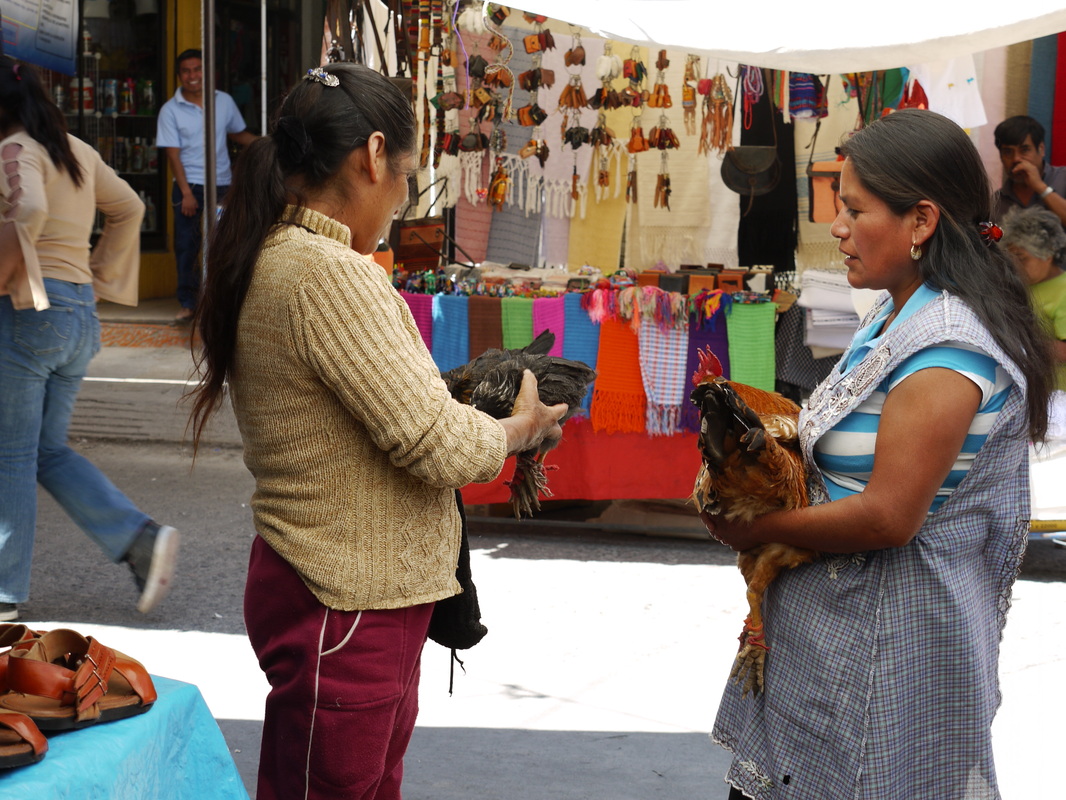
My chickens bigger than your chicken!
|
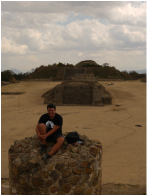
Ty at Monte Alban
|
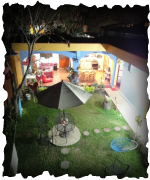 Our home for 3 weeks After some much un-needed metro delays and assistance from a wonderful local to get a taxi to the bus station we caught a 6 hour bus ride through the mountains from Mexico City to Oaxaca (you say it Waa-ha-ca) where we decided to base ourselves for a couple of weeks to learn some Spanish. Since we decided that we would just wander after Cuba it makes sense to us to be able to speak a bit more spanish than just "Una cerveza por favor!". We picked Oaxaca after hearing lots of really good things about it from other travellers. It has an old school colonial feel about it, lots of language schools and its also supposed to be the food capital of Mexico - seeing as Ty and I love mexican food it sounded like the perfect place.
Looking out the window of the bus we passed a mountain with snow capped peaks (had to remind myself it is actually winter here!), a smoking volcanoe and cactus forests which stretched for miles. Many of the farmers seemed to be practising the slash and burn method of agriculture which made us both remember our university days. I was really suprised by the quality of the roads; they rival any we have travelled on in western countries and our 2nd class bus was as good as any I've travelled on in Europe. Arriving in Oaxaca we promptly managed to get ourselves lost. It turns out that google has things upside down in Oaxaca (apparently a much known fact by the locals!) and so we walked with packs on our back for 20 minutes in the 30 degree heat in the wrong direction! Fortunately we had arrived during the day as the part of town that the 2nd class bus station is in has a whole different feel to the 'centro' which is where our hostel was. We checked into our hostel before heading to the 'Zocalo' (main square) for dinner at the local market. The Zocalo had a festive atmosphere with hundreds of locals sitting around under the trees people watching and enjoying the local band that was playing.
The hostel we booked into had a beautiful courtyard and was in a really good location but management had tiled the entire place which meant that while it looked great you could hear people roll over in the next room so we went looking for someone else to stay the next day. We found Cielo Azul hostel and decided to make it our home while we are here. It has a really nice grassed area and open plan living room/kitchen which opens out onto it and lucky for us it seems to be off season in Mexico so we usually only have to share the 8 bed dorm with 2 or 3 other people.
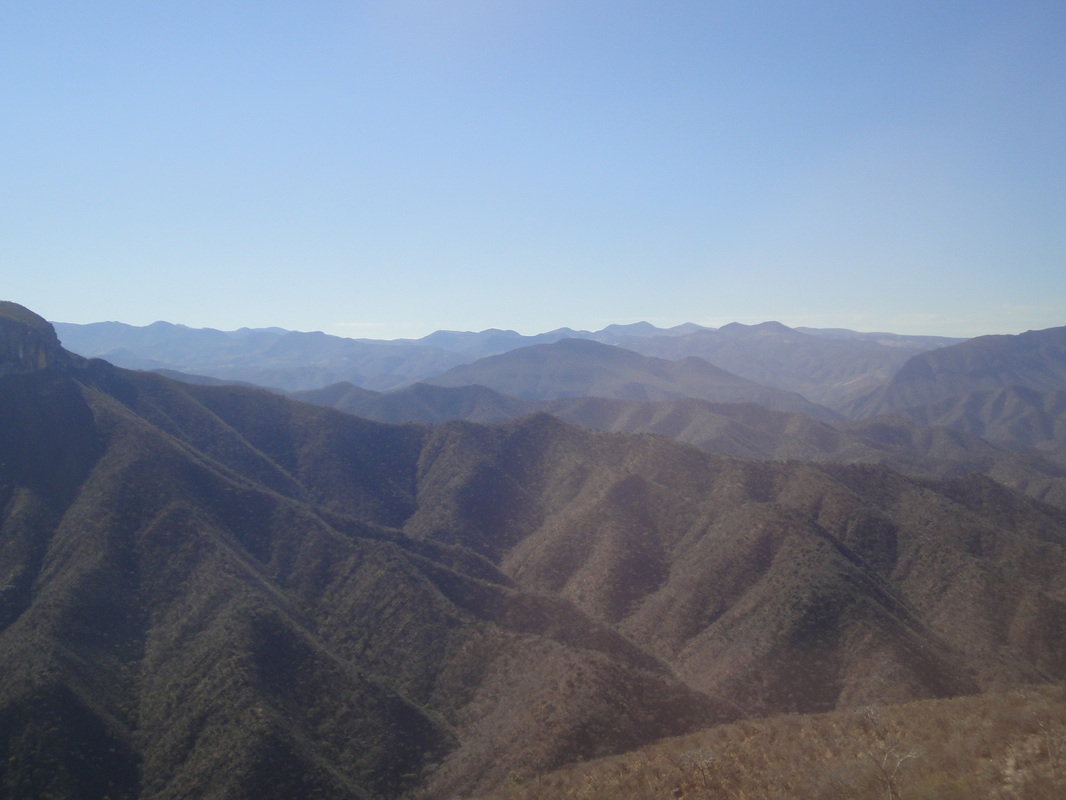
Cactus forests between Mexico City & Oaxaca
|
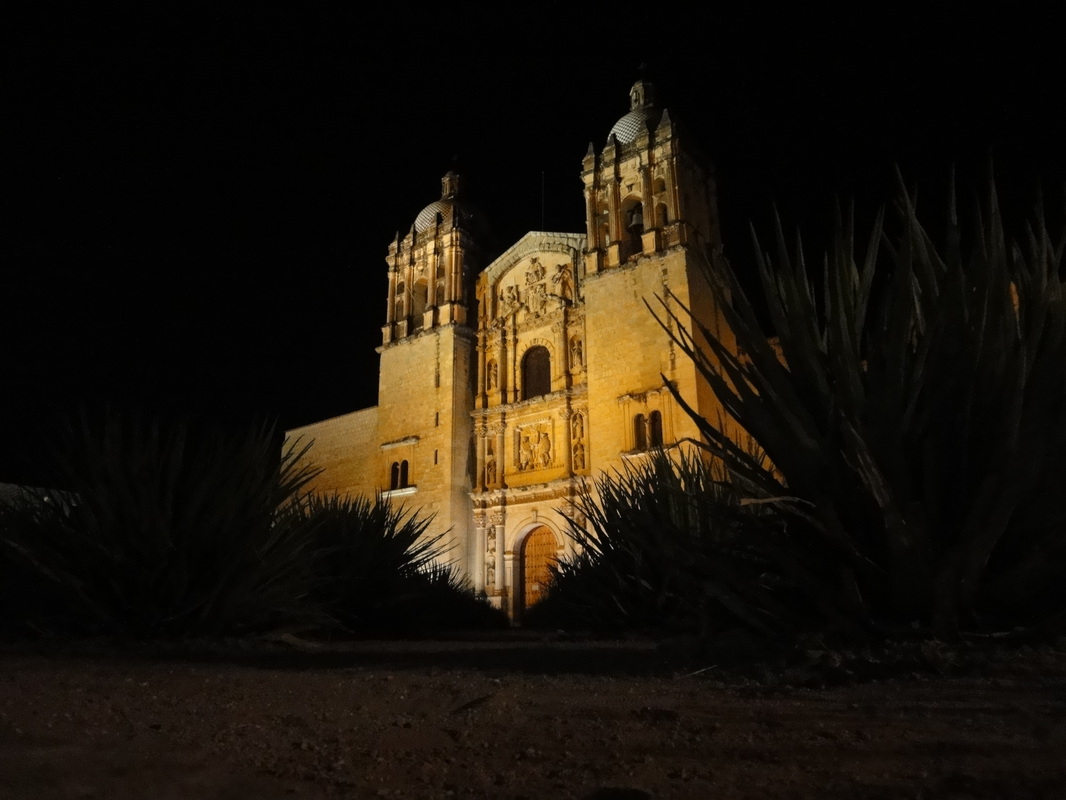
Santa Domingo Church
|
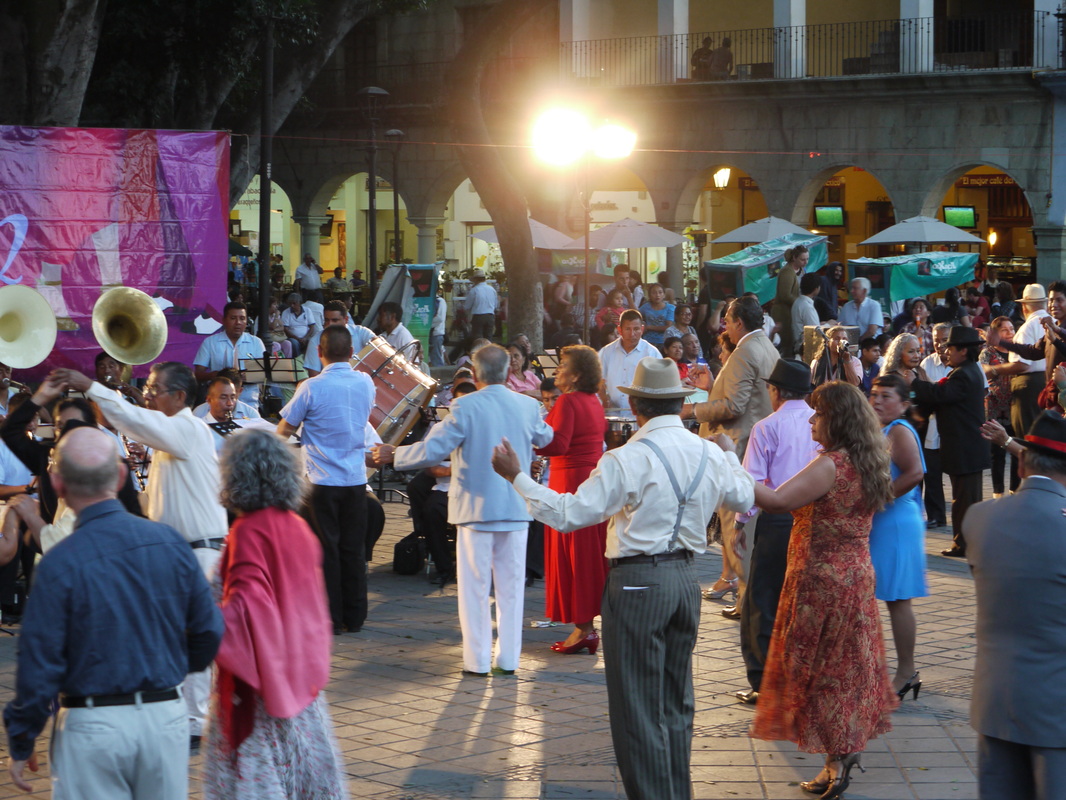
The locals enjoying dancing to the Symphony Orchestra
| After researching language schools on the internet we went on Monday morning to check out Oaxaca Spanish Magic. The school is located behind the beautiful Santa Domingo Church in the north part of the down-town so its about a 25 minute walk from the hostel. We ended getting signed up on the spot and starting our classes straight away which was a suprise but it was good to get going with things. We signed up for group classes but since we were the only beginners we got lucky and had private tuition with a lovely local lady called Carina. We committed ourselves to 20 hours the first week (4 hours of class a day plus homework) and found ourselves pretty mentally tired each night. Its been a long time since we have both worked our brains so hard! After class each day we gave ourselves a break and wandered around town soaking up the atmosphere and checking out the sites. Because we spent a bit more than we intended to in the States we took the opportunity in the first week to cut down on our spending so we cooked dinner at the hostel, or ate a big lunch with the locals at the market for 40 pesos each (£2!). We had intended to go exploring the local towns around Oaxaca the first weekend but I was struck down with a pretty bad case of Montezuma's Revenge so I didnt venture much outside our room and the couch for a few days. No idea what caused it as we both ate exactly the same things and Ty was fine. Tyro went exploring one of the other local markets with some others from the hostel but despite feeling pretty awful me being sick was kind of good in a way as it forced us to have some downtime for a few days. Much needed after 6 weeks on the road if we are honest! Week two of our Spanish course we had another lady called Patty (from America) in our group and a different teacher, called Emanuel. Manuel's a pretty good teacher but in contrast to Carina he pretty much refuses to speak English which we found really tough for the first few days. Its good to be totally immersed in Spanish for 4 hours but because we were still getting our heads around sentence structure and beginning to understand vocabulary we found it hard to keep up with what he was saying which was really frustrating. By the middle of the week I was starting to feel better so we wandered down to the Zocalo one night to watch one of the many performances which take place on a regular basis. That night it was the local symphony orchestra performing and lots of locals, dressed in their finest, had come out to dance along to the music. Some of the older men were seriously smooth looking dudes with coordinated suits, suspenders and fedora hats. On the Thursday Ty and I celebrated our 11th anniversary with a seriously good dinner at Los Danzantes. As it was Patty's last week at the school, Manuel offered to take us out to one of his favourite local restaurants on the Friday night and we had a really nice evening together. The place he took us to was up on one of the hills behind the town so we had an amazing view out over the city. Probably not somewhere we would have found by ourselves as Lonely Planet had scared me about wandering up there at night. To be continued... | |
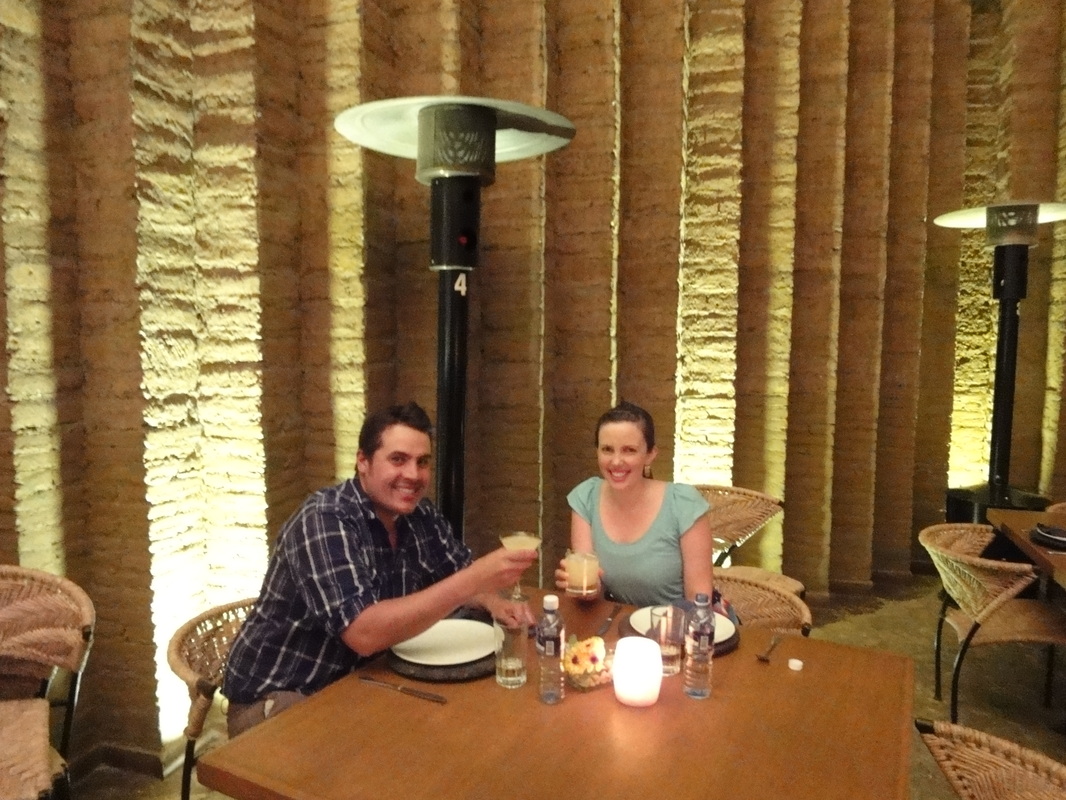
Celebrating 11 years together
|
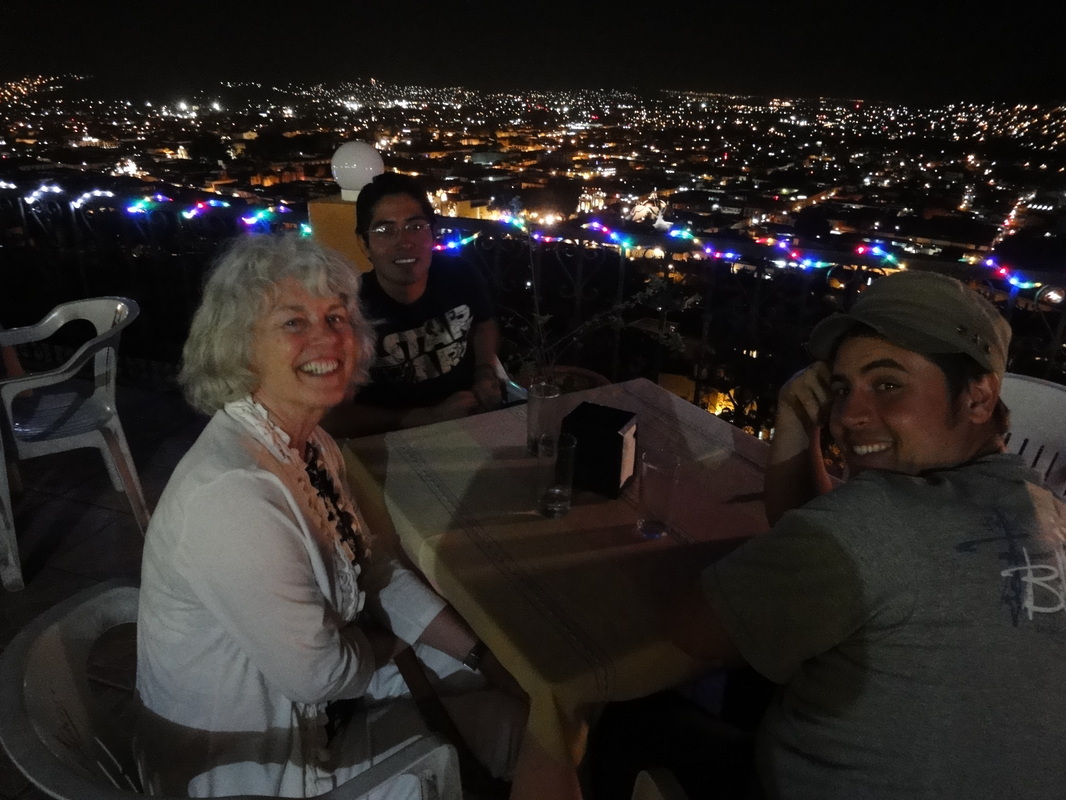
Dinner with an amazing view
|
Tequila is made from blue agave and by law must be made in the state of Jalisco (and a few other limited regions) so the rest of the Mexico had to come up with another name for their spirit. Oaxaca is famous for its Mezcal, tequila's strong, smokey, badass older brother, which for the most part is made today exactly the same was it was made 200 years ago. It is distilled from the Maguey plant (a type of Agave plant). There are over 200 different species of Maguey used to make the spirit and over six million litres of the stuff is produced in Mexico annually.
We visited a local Mezcaleria last weekend who gave us the run down on how its made. It takes 7 years for the Maguey plant to mature to the stage where it is ready to turn into Mezcal. The factory cuts off the leaves and the roots and uses the 'pina' (the heart) of the plant. To extract the juice the heart is cooked in a pit in the ground for up to 4 days, covered with earth and hay, kinda like an 'Umu' back home. After its cooked the skins are removed and the insides shredded. The shredded Agave is then mushed into a pulp by a donkey pulling a stone wheel (although the donkey we watched seemed like he might have taken a few too many tasters of the mashed substance, as his tongue was lolling drunkenly out of the side of his mouth!). Rumour has it that the old recipes for Mezcal required two chickens or turkey breasts to be placed in the mash during fermentation to add flavour, but I'm pretty sure that practice doesn't happen at the main factories today. After it has been left to ferment, the pulp is placed into a distiller and the final product is placed into American Oak barrels to start the ageing process.
The young Mezcal, basically straight from the distiller, is called aguadiente (firewater) for a reason! As you place the shot glass to your lips the white lightening immediately starts to burn. Its that drink that you can smell from across the room, its aroma more like petrol, or moonshine, than the delicacy the locals speak of. However, the aged varieties are a different story. The 'Anejo' (aged for 8 years) goes down like a smooth whiskey, warming you on the inside. The typical way to drink Mezcal is to sip it, or shot it, followed by an orange slice dipped in worm salt (salt, chilli and the ground up worm from the bottom of the bottle). The fabricas (factories) also make creamy varieties these days - similar to kahlua and baileys - which are way too easy to drink! With flavours like chocolate, passionfruit, hazelnut, mango or pistachio and an alcohol content of up to 55% we were happily on our way by the time we had finished with our free samples!
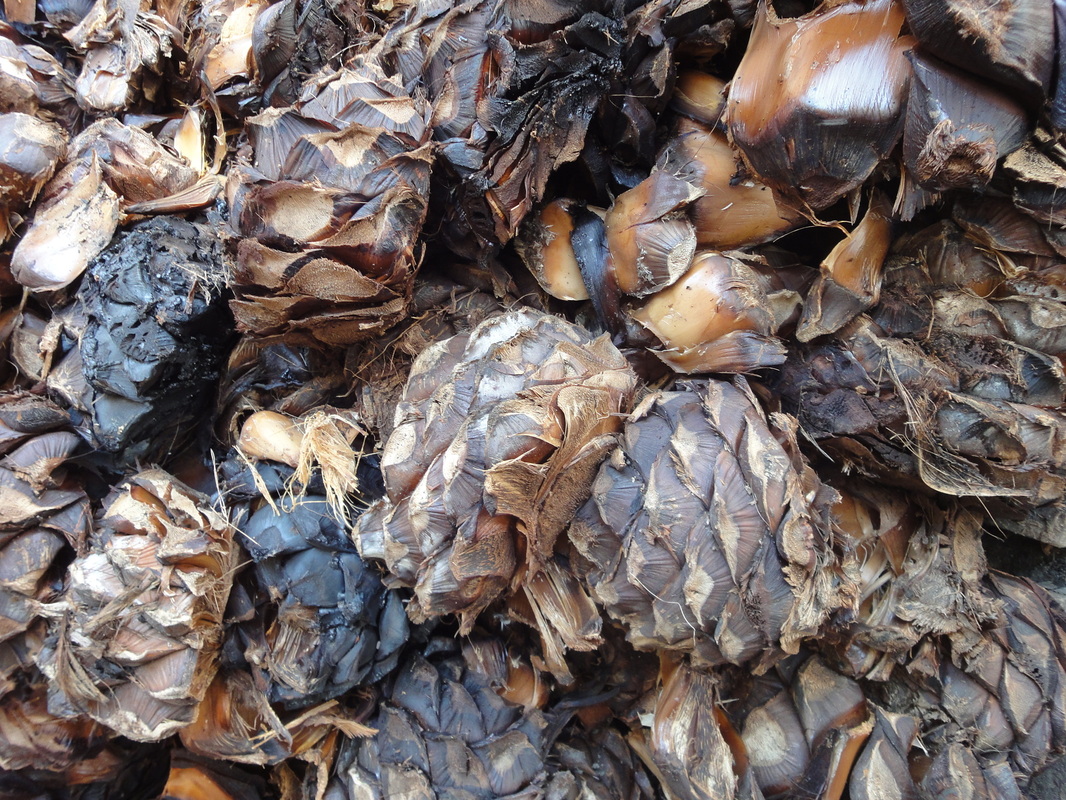
The cooked agave
|
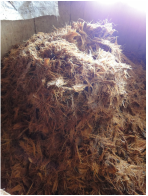
The shredded agave
|
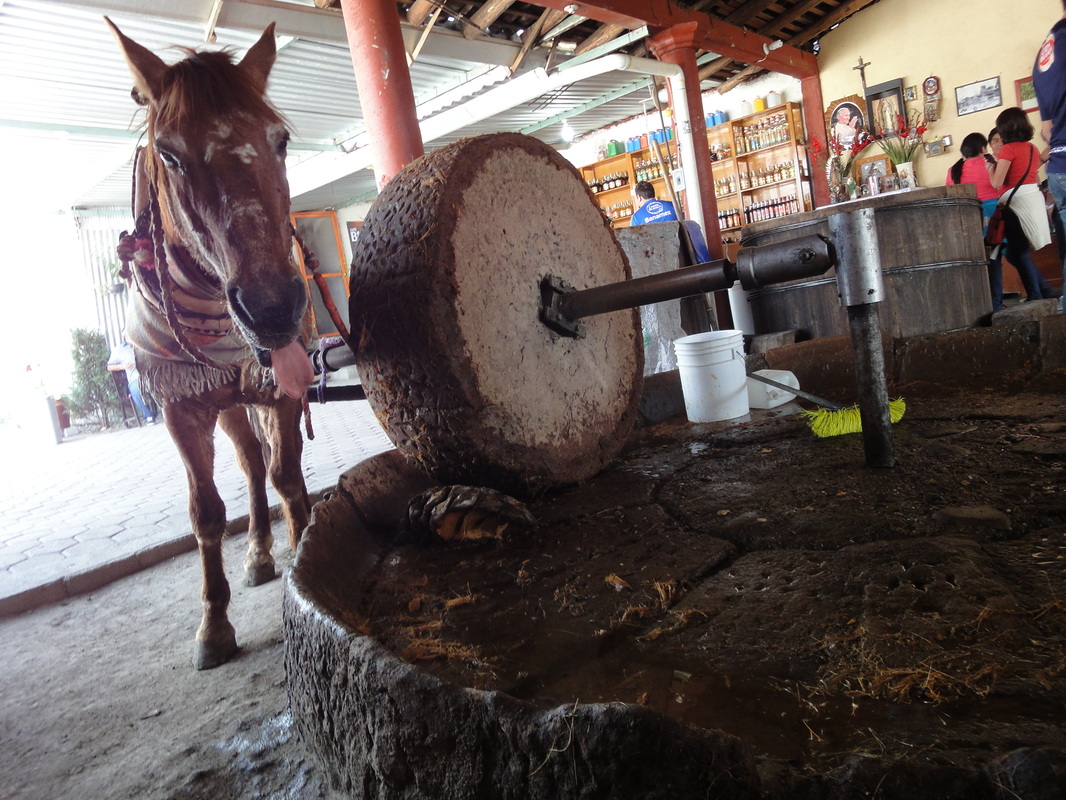
Drunken donkey ready to roll!
|
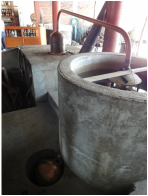
The distilling process
|
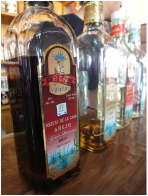
The good stuff!
|
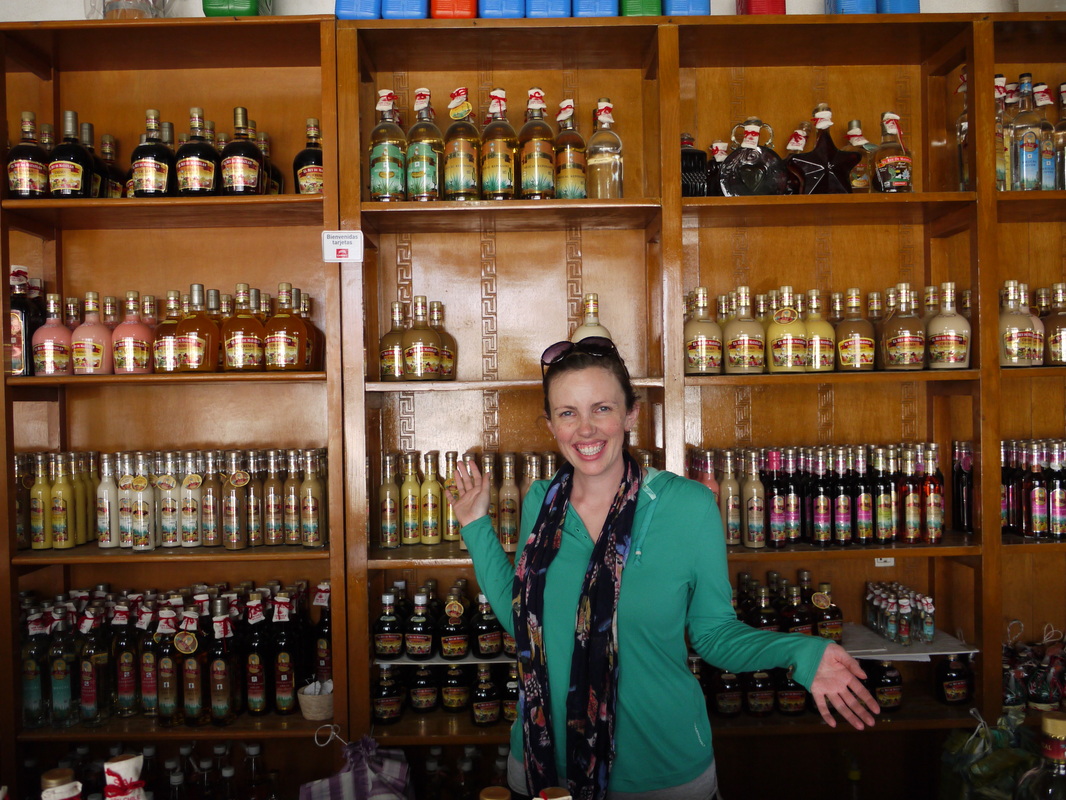
So many choices! (plus a pretty cheesy grin after 10 or 12 free samples!)
|
|

















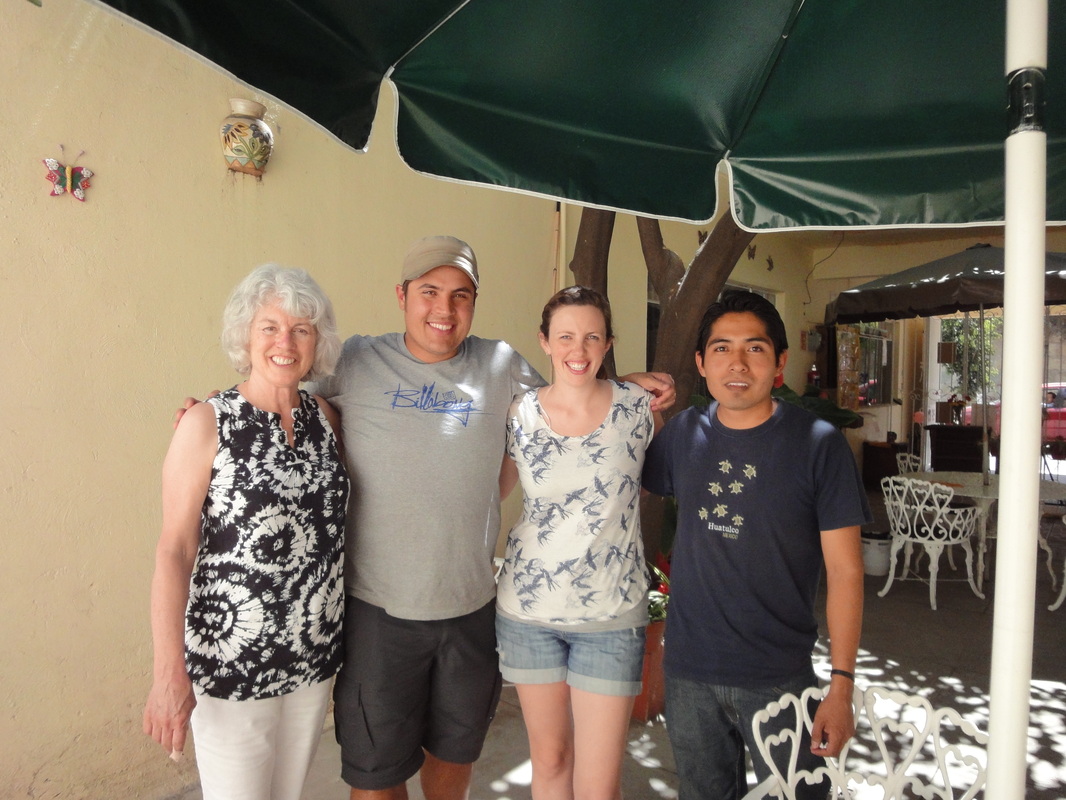








 RSS Feed
RSS Feed